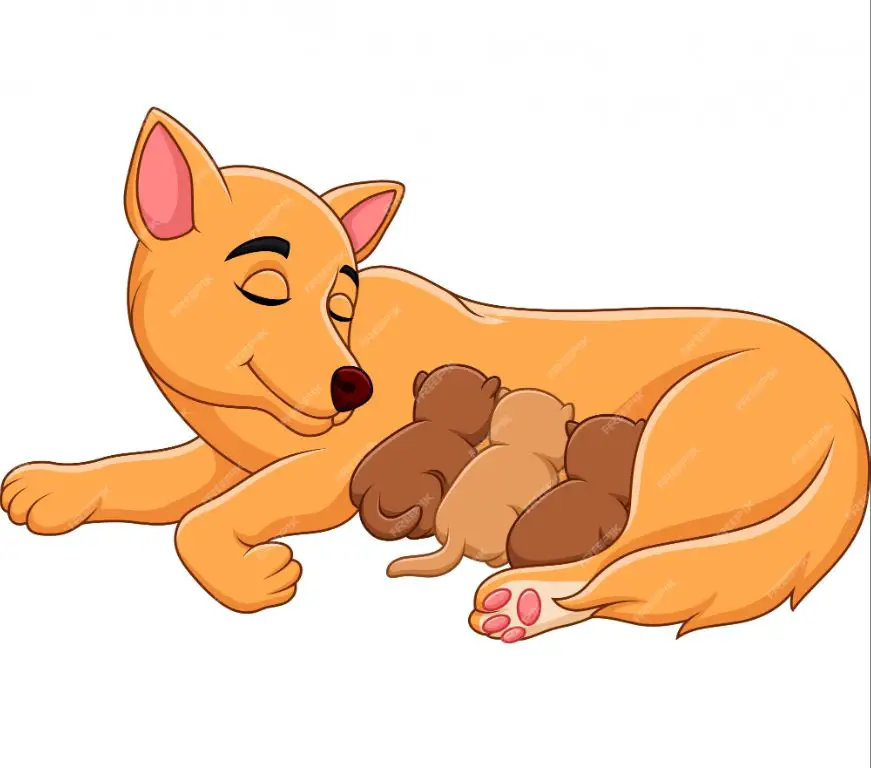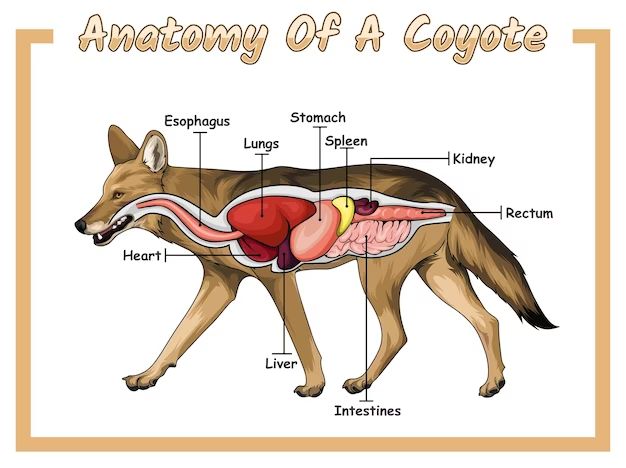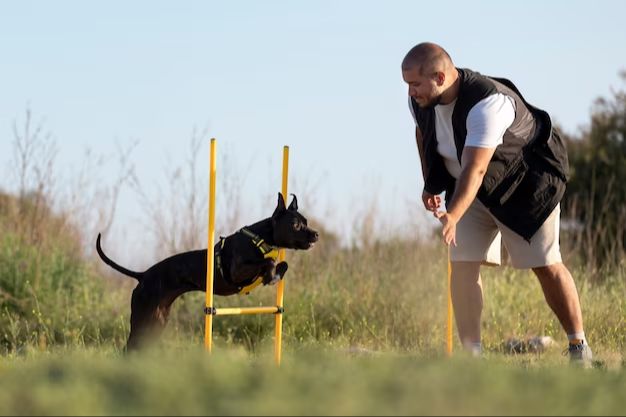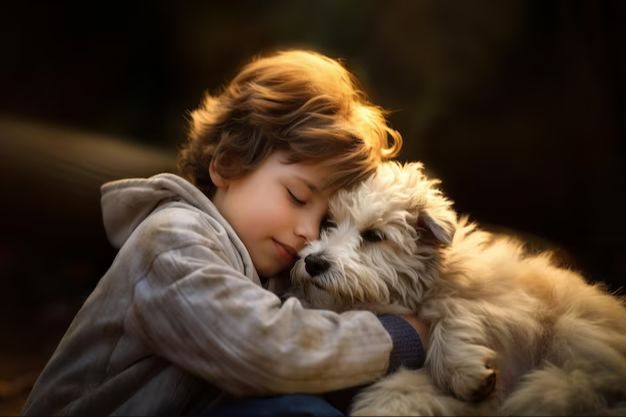Introduction
Dogs are one of the most popular domestic animals, found in households around the world as beloved pets. Scientifically, dogs are classified as canines, belonging to the family Canidae. There are over 340 recognized dog breeds, exhibiting an incredible diversity in size, colors, coat types, personalities and abilities.
Some of the most common types of dogs include:
- Companion dogs – Bred as friendly household pets, like Poodles, Pugs, and Cavalier King Charles Spaniels.
- Sporting dogs – Bred for hunting, field trials or water sports, like Labrador Retrievers, Golden Retrievers and Cocker Spaniels.
- Hounds – Bred for hunting by sight or smell, like Beagles, Basset Hounds and Dachshunds.
- Working dogs – Bred for guarding property, pulling sleds or performing rescues, like Siberian Huskies, Rottweilers and Saint Bernards.
- Herding dogs – Bred to herd livestock, like Collies, Australian Shepherds and Pembroke Welsh Corgis.
- Terriers – Bred to hunt vermin and dig underground, like West Highland White Terriers, Yorkshire Terriers and Staffordshire Bull Terriers.
Dogs are Mammals
Dogs belong to the kingdom Animalia, phylum Chordata, class Mammalia, order Carnivora, family Canidae, genus Canis, and species Canis familiaris. This taxonomy means dogs are mammals, a class of animals that have several defining features:
- Mammals give live birth – Unlike reptiles and birds, mammals do not lay eggs. Instead, they nourish their young in the mother’s womb through a placenta and give birth to live offspring.
- Mammals produce milk – Female mammals have mammary glands that produce milk to feed their newborn babies. Mothers nurse their young with this milk for a period of time after birth.
- Mammals are warm-blooded – Mammals are endothermic, meaning they regulate their own body temperature even as the external temperature changes. This is in contrast to cold-blooded animals like reptiles.
As mammals, dogs have all of these features. Mother dogs carry puppies in their womb, give birth to live pups, and then produce milk in their mammary glands to nurse the newborn puppies.

Key characteristics of dogs
Dogs have several defining characteristics that make them unique in the animal kingdom. Here are some of the main traits that set dogs apart:
Omnivorous – Dogs are omnivores, meaning they can thrive on both plant and animal sources of food. In the wild, dogs would hunt prey animals while also scavenging for fruits, vegetables, and other plant matter. As domesticated animals, dogs maintain an omnivorous ability to digest a varied diet.
Acute sense of smell – A dog’s sense of smell is its strongest sense and is about 10,000 to 100,000 times more acute than a human’s. This powerful olfactory ability allows dogs to follow scent trails, detect subtle odors, identify other animals, find food, and more. A dog’s wet nose also helps absorb scent chemicals.
Domesticated – All modern dog breeds descended from wild wolves that were gradually domesticated by humans over thousands of years. Selective breeding gave rise to dogs’ distinct traits and behaviors that were advantageous for human companionship. As a domesticated species, dogs thrive in human environments.
Dogs and Humans
Dogs have a long history of working alongside humans. Some of the common jobs dogs have held over the centuries include:
Herding livestock – Breeds like Border Collies, Australian Shepherds, and Collies have been bred over generations to herd livestock such as sheep, cattle, and goats.
Hunting – Hound dogs have accompanied humans on hunts for millennia. Their keen sense of smell allows them to track prey like rabbits, deer, and birds.
Guarding – Large, protective breeds like Doberman Pinschers, Rottweilers, and Mastiffs have been used to guard property throughout history.
Sled pulling – Breeds like Siberian Huskies and Alaskan Malamutes have hauled supplies and people across snow and ice in frigid climates.
Police and military work – Dogs like German Shepherds are known for their intelligence and trainability, making them well-suited for supporting police and military operations.
Disability assistance – Dogs can be trained to perform a variety of tasks for people with disabilities, such as guiding the blind, alerting the deaf, and pulling wheelchairs.
Detection – Dogs’ sensitive noses allow them to sniff out explosives, drugs, cadavers, bedbugs, and more.
Therapy – Calm, friendly dogs provide comfort and stress relief in settings like hospitals, schools, and nursing homes.
In addition to working roles, dogs are prized as companions and pets in many cultures. Their loyalty, affection, and playfulness have earned them a special place by human sides for thousands of years. Keeping dogs as pets offers many benefits for people, including:
– Companionship and bonding
– Stress relief and mood boosting
– Motivation for exercise and outdoor activities
– Sense of security and protection
– Responsibility and purpose for teaching and caring
– Unconditional love and acceptance
Dog Anatomy
Dogs have a complex physical structure that allows them to run, jump, play, and live alongside humans. Here are some key aspects of a dog’s anatomy:

Skeletal Structure
A dog’s skeletal system consists of around 319 bones. Key bones include the skull, spine, ribs, legs, and tail. A dog’s bones give its body structure and protect vital organs. The skeletal structure enables dogs to stand, walk, run, and perform various movements.
Muscular Structure
Dogs have over 700 muscles in their bodies. Major muscles include the temporalis, used for chewing; the longissimus, which allows extension and flexion of the spine; the gluteals, used for hindlimb motion; and the biceps brachii, which allows the front legs to contract. Muscles give dogs physical strength and mobility.
Organs
A dog’s organs perform essential bodily functions. This includes the heart, lungs, liver, kidneys, stomach, intestines, brain, and more. Key senses like sight, smell, and hearing are controlled by a dog’s organs. Vital processes like digestion, respiration, circulation, and nerve functioning depend on a dog’s organs.
Dog Life Stages
Dogs go through several distinct life stages, from gestation as puppies to old age. Understanding the phases of a dog’s life can help owners better care for their pet’s needs at each stage.
Gestation
The gestation period for dogs is approximately 63 days on average. During this time, puppies are developing in their mother’s womb, going from fertilized eggs to newborn puppies ready to be born. Pregnant female dogs need extra nutrition and care as the puppies grow inside their womb.
Puppy
The puppy stage lasts from birth until about 1 year old. Puppies grow very quickly during their first year, gaining as much as 10% of their body weight per day. This is a crucial time for socialization, training, and establishing a bond with their human owners. Puppies need extra patience, care and supervision as they learn appropriate behaviors.
Adolescent
From 1-2 years old, dogs enter adolescence. Their energy levels may fluctuate during this stage as they transition from puppy to adult. Adolescent dogs need structure, exercise and ongoing training to help direct their energy positively. Spaying/neutering at an appropriate age is recommended.
Adult
The adult stage lasts 1-6 years, depending on the dog’s size. This is when they reach both physical and mental maturity. Adult dogs have calmer energy levels and care needs compared to young dogs. Establishing a consistent routine is important to keep them mentally and physically fit.
Senior
At around 6-10 years old, dogs transition into their senior years. Signs of aging include slower movements, graying fur, and changes in activity levels or behavior. Providing appropriate senior care, with more frequent vet checkups, can help dogs live a comfortable life in their older age.
Common Health Issues
Dogs, like humans, are susceptible to various health problems. Some of the most common health issues in dogs include:
Obesity
Obesity is one of the most common health problems in dogs. An obese dog has excessive body fat and is over its ideal weight. Extra weight puts more strain on the heart, lungs, joints, and other organs. Obese dogs are at higher risk for diabetes, heart disease, arthritis, breathing issues, and certain types of cancer. Maintaining a healthy weight through proper diet and exercise is important.
Dental Disease
Dental disease is very prevalent in dogs. Poor dental health can lead to tooth loss, infections, and pain. Common dental problems in dogs include plaque buildup, gingivitis, periodontal disease, tooth fracture, and malocclusion. Providing dental chews, brushing your dog’s teeth, and professional cleanings at the vet can help maintain good oral health.
Allergies
Allergies are common in dogs. Allergic reactions can be caused by food ingredients, medications, grass, pollen, fleas, or environmental irritants. Common symptoms of allergies in dogs include itchy skin, chronic ear infections, hair loss, and skin irritation. Allergies can be managed through dietary changes, medications, and avoiding exposure to allergens.
Training and socializing
Proper training and socialization is crucial for raising a happy and well-adjusted dog. Here are some of the most important things to focus on:

Housetraining
Housetraining a puppy requires patience, consistency and positive reinforcement. Take your puppy outside frequently, at least every 2 hours as well as after eating, drinking, playing and sleeping. Always praise and reward with treats when they go potty outside. Any accidents inside should be cleaned thoroughly with an enzymatic cleaner to remove the smell. Never punish a puppy for going inside, it will only teach them to hide the behavior.
Basic commands
All dogs should be taught basic obedience commands like “sit,” “stay,” “come” and “down.” Keep training sessions short and upbeat, using praise and small food rewards. Be patient and consistent while gradually extending the duration of commands. Consider enrolling in a positive reinforcement based puppy kindergarten class.
Socialization
Socializing a puppy is critical for preventing behavior issues later on. Introduce them to a wide variety of people, places, sights, sounds, and other animals in a positive and controlled way. Let them explore new environments but don’t overwhelm them. Set them up for successful interactions to build confidence.
Grooming
Proper grooming is an important part of caring for a dog’s health and wellbeing. Grooming helps keep your dog’s coat and skin clean and free of dirt, debris, parasites, and other harmful elements. Here are some key grooming tasks you should perform regularly:
Brushing
Brushing helps remove loose hair and distribute skin oils throughout your dog’s coat for a healthy shine. Use a stiff bristle brush for short smooth coats and a slicker brush for long or curly coats. Brush against the direction of hair growth to remove dead hair and debris close to the skin. Brush along the direction of hair growth to smooth and distribute oils.
Bathing
Give your dog a bath regularly using a mild dog shampoo. Bathing helps keep their coat clean and skin free of dirt, oil, and allergens. Avoid over-bathing, which can dry out the skin. Bathe smooth coats every few months and long or curly coats less frequently. Always thoroughly rinse out shampoo to prevent skin irritation.
Nail Trimming
Trim your dog’s nails regularly to keep them short and prevent cracking and splitting. Use dog nail clippers or grinders and trim just the tip of the nail above the quick, the blood vessel inside. Introduce nail care slowly, reward cooperation, and maintain calm to make it a stress-free process.
Conclusion
Dogs are special animals that have a close bond and relationship with humans. We covered key points about dogs including:
- Dogs are mammals that have unique traits like fur, live birth, and mammary glands.
- Dogs have a complex anatomy with digestive, respiratory, circulatory, nervous, and other systems.
- Dogs go through distinct life stages from birth, weaning, adolescence, adulthood, and senescence.
- Proper training and socialization of dogs is important during puppyhood.
- Grooming helps keep dogs clean and healthy.
But most importantly, we learned about the special friendship between dogs and humans. Dogs provide companionship, loyalty, and emotional support. Their dependence on people creates a mutual bond. With proper care and affection, dogs become beloved members of the family.

The relationship between humans and dogs is ancient and dates back over 15,000 years. Dogs truly are humankind’s best friends.